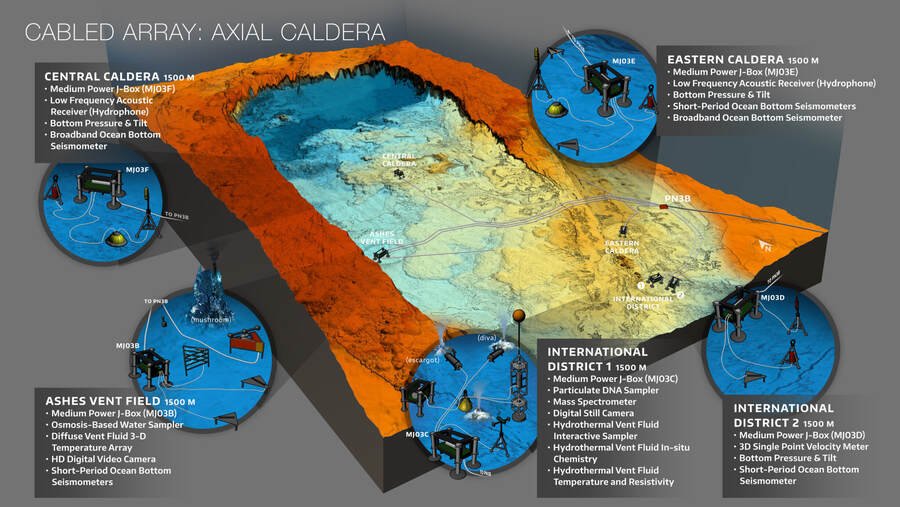SubC Stories: Hydrothermal Vent Digital Stills Time-Lapse
Data collected from the most advanced volcanic observatory in the oceans
Digital stills captured every 30 minutes by the SubC Rayfin allow for long-term observation of the actively venting chimney “Tiny Towers”
Since 2014, the Ocean Observatories Initiative (OOI), in partnership with the University of Washington, has been using SubC Imaging’s subsea cameras, LEDs and lasers on the Regional Cabled Array (RCA).
In-Depth Research
The RCA consists of cabled arrays of ocean observing technology in the Northeast Pacific Ocean that spans the Juan de Fuca plate and overlying water column. Data collected from the observatory allows for in-depth research on volcanic activity, methane seeps, hydrothermal vents, submarine earthquakes, and biological, chemical, and physical environmental changes.
The Most Advanced Volcanic Observatory
Axial Seamount, a key experimental site on the RCA, is the most active submarine volcano in the Northeast Pacific. It is located 250 miles off the Oregon coast and sits at a depth of 1500 m and last erupted in April of 2015. Seismic data tells us that there are two large magma reservoirs beneath the volcano providing heat that drives underwater hot springs and the creation of hydrothermal vent deposits, making this a key seafloor observation site for researchers. It is the most advanced volcanic observatory in the oceans.
Scientists have been using SubC Imaging Rayfin cameras across many RCA observatory sites since August 2020, including the International District Vent Field 1 on Axial Seamount. The camera system includes an Aquorea LED lamp, Mantaray Parallel lasers, and a pan-tilt unit.
Research at the International District Vent Field is investigating the chemistry and temperatures of high temperature and diffuse flow vent sites, and the novel microbial communities that they host. A goal is to understand the connections between seismicity, fluid temperatures and chemistry, and the evolution of biological communities over time in highly dynamic environments exposed to volcanic eruptions.
Educational Time-Lapse - Thanks to The Rayfin!
The University of Washington’s Applied Physics Laboratory uses SubC’s Rayfin camera scripting function to capture a digital still of an actively venting chimney called “Tiny Towers”, every 30 minutes.
In this time-lapse example, you’re seeing 20 high-resolution digital stills of Tiny Towers per month over 10 months -- from August 2020 to May 2021. It’s interesting to see how the environment changes and the marine growth starts to form on the camera lens.
A collection of digital stills, captured over many years, is available on the OOI website. Read more about OOI’s hydrothermal vent research in the references below:
References
OOI CAMDSB - SubC Digital Stills Camera - https://oceanobservatories.org/instrument-series/camdsb/
OOI International District Vent Field 1 - https://oceanobservatories.org/site/rs03int1/
OOI Raw Digital Still Time-Lapse Collection - https://rawdata.oceanobservatories.org/files/RS03INT1/MJ03C/CAMDSB303_10.31.8.5/
Citation: Friedrich Knuth, Leila Belabassi, Lori Garzio, Michael Smith, Michael Vardaro. (2016) Automated QA/QC and time series analysis on OOI high-definition video data. DOI: 10.1109/OCEANS.2016.7761396
Citation: Smith, Leslie & Barth, John & Kelley, Deborah & Plueddemann, Albert & Rodero, Ivan & Ulses, Greg & Vardaro, Michael & Weller, Robert. (2018). The Ocean Observatories Initiative. DOI: 10.5670/oceanog.2018.105



